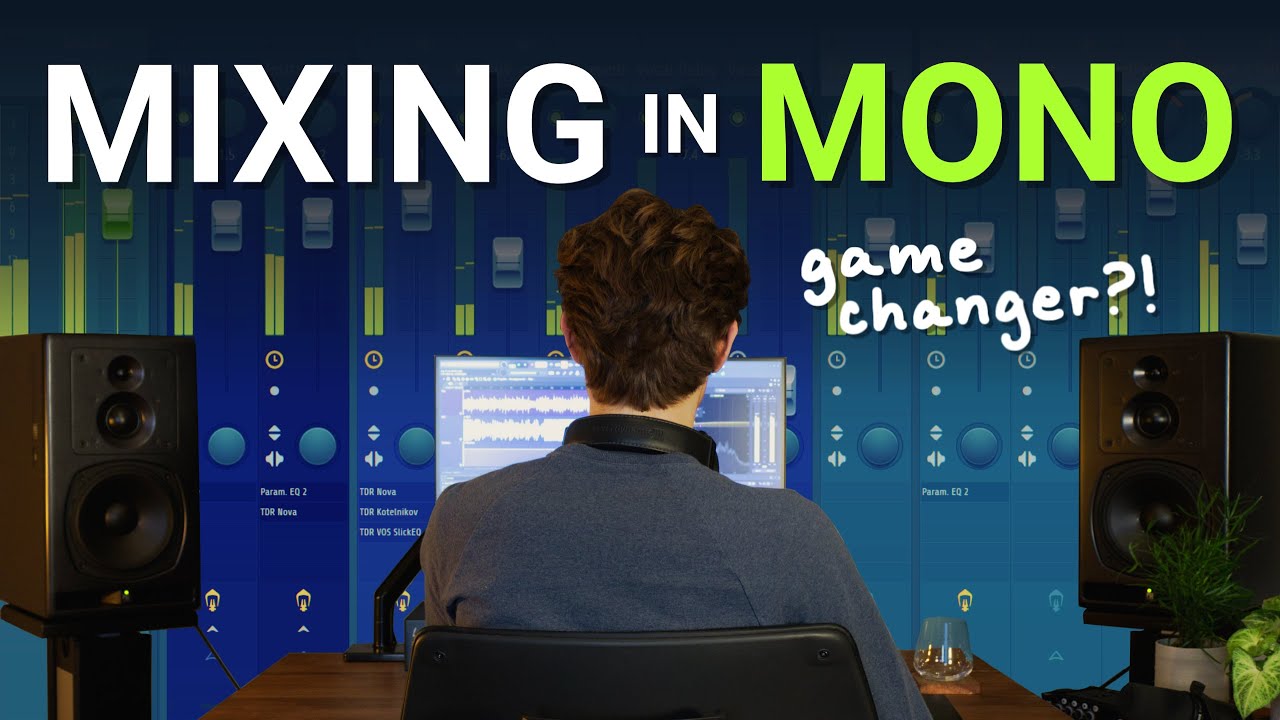Mixing in mono is one of those production “tricks” that have solidified in my mixing routine to achieve clearer mixes. It’s a really easy shortcut to hearing levels and even frequencies of everything in your track without the distraction of stereo imaging. It also helps to figure out phase issues between closely tuned kicks and bass and correct your synth sound design too!
But sometimes the immediate benefit it gives us gets outweighed by a longterm one of improving your critical hearing skills. For example, if you use mono to hear frequency fighting between instruments, you’re undercutting your learning experience of properly working with frequencies in stereo. After all, it’s not uncommon to pan different instruments asymmetrically. Having stereo means you have two different signals that should be shaped on their own terms.
Michael is going to walk us through some of the things that mixing in mono can be used for and give some perspective on how those particular uses stack up in a more robust or specific production workflow. And, I hope this knowledge helps you in your own productions!
I’m not typically a huge fan of YouTube tutorials in general — I usually prefer reading — however, I’ve stumbled on this guy’s videos before, and I really enjoy his work!
While mixing, I’ve been keeping a bypassed bx_solo (Plugin Alliance freebie) on my master bus, and I have it set to mono. Every so often in the mixing process, I’ll kick it on to make sure everything is legible, and now I feel validated by this video.
I like Michael’s channel, he’s got a good technical backbone and is able to explain things simply and without leaving important nuance out. He also edits really well visually in his other videos, if you can’t catch up to technical jargon you’ll just see and hear what’s going on. That’s how tutorials should be!
Though I totally agree, most youtube tutorials are a way rougher trip, but so are any written blog posts and guides. And those are more difficult to verify because you need to research writer’s credentials, where as in a video you can already tell how good the producer is.
I am a really slow and inattentive reader, so visual instructions work better for me. I know it’s not everyone’s cup of tea, so I try to post an overview in text on what the video actually explains. That way, I’m not wasting text that most users probably won’t read and try to give a good idea of what the video covers to those who do. Part of it is also done in the title. Let me know if you have any feedback relating to that, I’m always looking to improve my writing style!
I like Michael’s channel, he’s got a good technical backbone and is able to explain things simply and without leaving important nuance out. He also edits really well visually in his other videos, if you can’t catch up to technical jargon you’ll just see and hear what’s going on. That’s how tutorials should be!
Fully agreed! I dig his calm demeanor quite a bit, and will definitely be checking into his other work. You make a great point about jargon: I’m not afraid of it, however, my academic background is in the social sciences. My professional audio background came from an apprenticeship-like situation, and every so often, I actually do find myself behind the curve when it comes to technical lingo.
Though I totally agree, most youtube tutorials are a way rougher trip, but so are any written blog posts and guides. And those are more difficult to verify because you need to research writer’s credentials, where as in a video you can already tell how good the producer is.
A very fair assessment — not every discipline can be as straightforward in video tutorials with regard to assessing quality! I’m just glad Michael isn’t screaming 😂
I am a really slow and inattentive reader, so visual instructions work better for me. I know it’s not everyone’s cup of tea, so I try to post an overview in text on what the video actually explains. That way, I’m not wasting text that most users probably won’t read and try to give a good idea of what the video covers to those who do. Part of it is also done in the title. Let me know if you have any feedback relating to that, I’m always looking to improve my writing style!
Your synopsis was great, and I don’t see anything wrong with your writing style! Your spelling, grammar, and punctuation are pretty damn good for a random internet post, I appreciate that you included some of Michael’s major points — the latter is what got me to check out the video, and, like you said, hear his demonstrations.
Thanks for the kind words! I’ll keep 'em coming :)
Nice explanation. Especially about drawbacks.
I’ve not watched the video yet tbh, but if you aren’t checking your mixes in mono frequently you’re missing a trick! (Especially if you want to play live/get your tunes played in clubs and venues, where most systems are mono).




